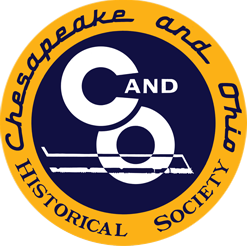

$19.95
Pere Marquette Corporate History ICC Valuation 1914
In 1913 the U. S. Congress mandated that all American Railroads should have a value set on them as they existed at that time. The purpose was for general taxation and to assist the Interstate Commerce Commission in its regulatory duties. To accomplish this committees, usually consisting mainly of Civil Engineers, were appointed by each railroad company. These committees then did an exhaustive survey of all the property, equipment, and assets of the line and established a fair market value as of a certain date. This report
was submitted to Congress and hearings were held. After this a value was set, and this became the “Date of Valuation.”
The materials pertaining to this process were deposited with the Interstate Commerce Commission and they became part of the ICC’s regulation of the railways. Most railroads continued their Valuation Departments, though on a reduced scale, as part of the road’s general engineering function. Supplemental reports were submited to the ICC, and certain standardized records were required by that body. Included in the Valuation study was a Corporate History, tracing the companies and entities that formed the current company, often giving lavish detaiL Standardized Valuation Maps were made for every mile of road, showing all structures, land holdings, and property of any kind. These maps formed the basis for all engineering on most railroads from that time down to the present. The “Val Maps” became indespensible parts of PM civil engineering, and prints were supplied to roadmasters, contractors, engineers, and anyone having interest in right-ofway or phyiscal plant.
This is the Corporate History as presented in 1914. It is reproduced from a copy made in that era by carbon paper, and the clarity leaves something to be desired. We have rendered the best possible reproduction here based on the original.
180 pgs.
Pere Marquette Corporate History ICC Valuation 1914
In 1913 the U. S. Congress mandated that all American Railroads should have a value set on them as they existed at that time. The purpose was for general taxation and to assist the Interstate Commerce Commission in its regulatory duties. To accomplish this committees, usually consisting mainly of Civil Engineers, were appointed by each railroad company. These committees then did an exhaustive survey of all the property, equipment, and assets of the line and established a fair market value as of a certain date. This report
was submitted to Congress and hearings were held. After this a value was set, and this became the “Date of Valuation.”
The materials pertaining to this process were deposited with the Interstate Commerce Commission and they became part of the ICC’s regulation of the railways. Most railroads continued their Valuation Departments, though on a reduced scale, as part of the road’s general engineering function. Supplemental reports were submited to the ICC, and certain standardized records were required by that body. Included in the Valuation study was a Corporate History, tracing the companies and entities that formed the current company, often giving lavish detaiL Standardized Valuation Maps were made for every mile of road, showing all structures, land holdings, and property of any kind. These maps formed the basis for all engineering on most railroads from that time down to the present. The “Val Maps” became indespensible parts of PM civil engineering, and prints were supplied to roadmasters, contractors, engineers, and anyone having interest in right-ofway or phyiscal plant.
This is the Corporate History as presented in 1914. It is reproduced from a copy made in that era by carbon paper, and the clarity leaves something to be desired. We have rendered the best possible reproduction here based on the original.
180 pgs.
| Media type | Printed, CD |
|---|
| Availability |
Now available in-store at 312 E. Ridgeway St Clifton Forge 24422 Powered With Oliver Pos |
|---|
